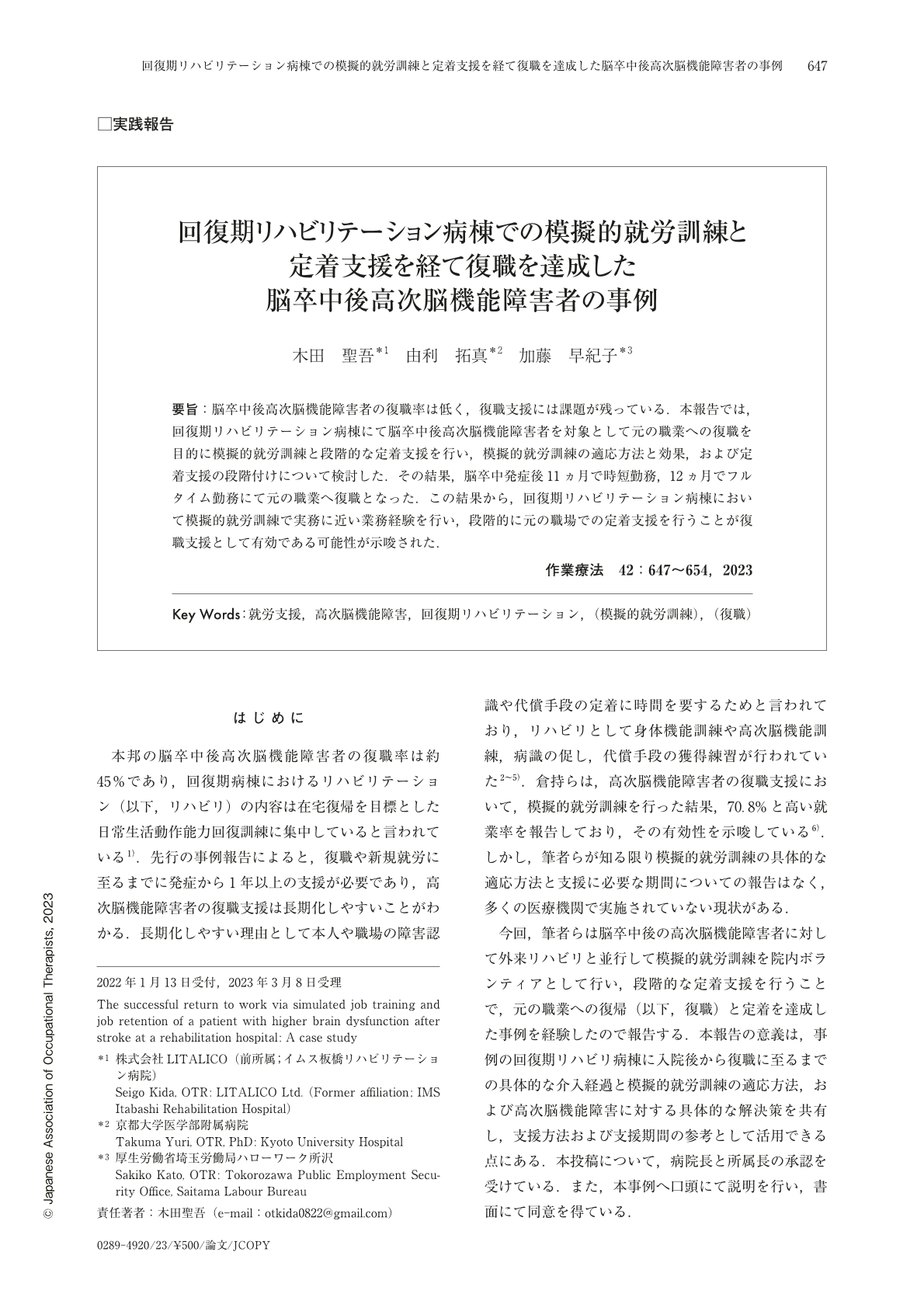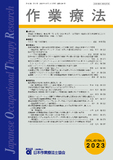Japanese
English
- 販売していません
- Abstract 文献概要
- 1ページ目 Look Inside
- 参考文献 Reference
- サイト内被引用 Cited by
脳卒中後高次脳機能障害者の復職率は低く,復職支援には課題が残っている.本報告では,回復期リハビリテーション病棟にて脳卒中後高次脳機能障害者を対象として元の職業への復職を目的に模擬的就労訓練と段階的な定着支援を行い,模擬的就労訓練の適応方法と効果,および定着支援の段階付けについて検討した.その結果,脳卒中発症後11ヵ月で時短勤務,12ヵ月でフルタイム勤務にて元の職業へ復職となった.この結果から,回復期リハビリテーション病棟において模擬的就労訓練で実務に近い業務経験を行い,段階的に元の職場での定着支援を行うことが復職支援として有効である可能性が示唆された.
The rate of return to work in patients with higher brain dysfunction after stroke is low, and improvement in support for return to work is needed. We intervened with simulated job training and gradual support in continuous employment at a rehabilitation hospital which resulted in the patient with higher brain dysfunction after stroke successfully returning and continuing to work. This study aims to demonstrate how to use the simulated job training and gradual support in continuous employment, as well as clarifies the effectiveness of the simulated job training and gradual support in continuous employment. As a result, this case successfully returned to work as a part-time worker and full-time worker 11 and 12 months respectively after the stroke onset. These findings suggest the effectiveness of interventions with simulated job training and gradual support in continuous employment as support for returning to work at a rehabilitation hospital.

Copyright © 2023, Japanese Association of Occupational Therapists. All rights reserved.


